How to Make and Use Vegetable Powder
Knowing how to make and use vegetable powder takes your dehydrating to the next level! Here is a quick and easy way to make them even more versatile! Vegetable powder!
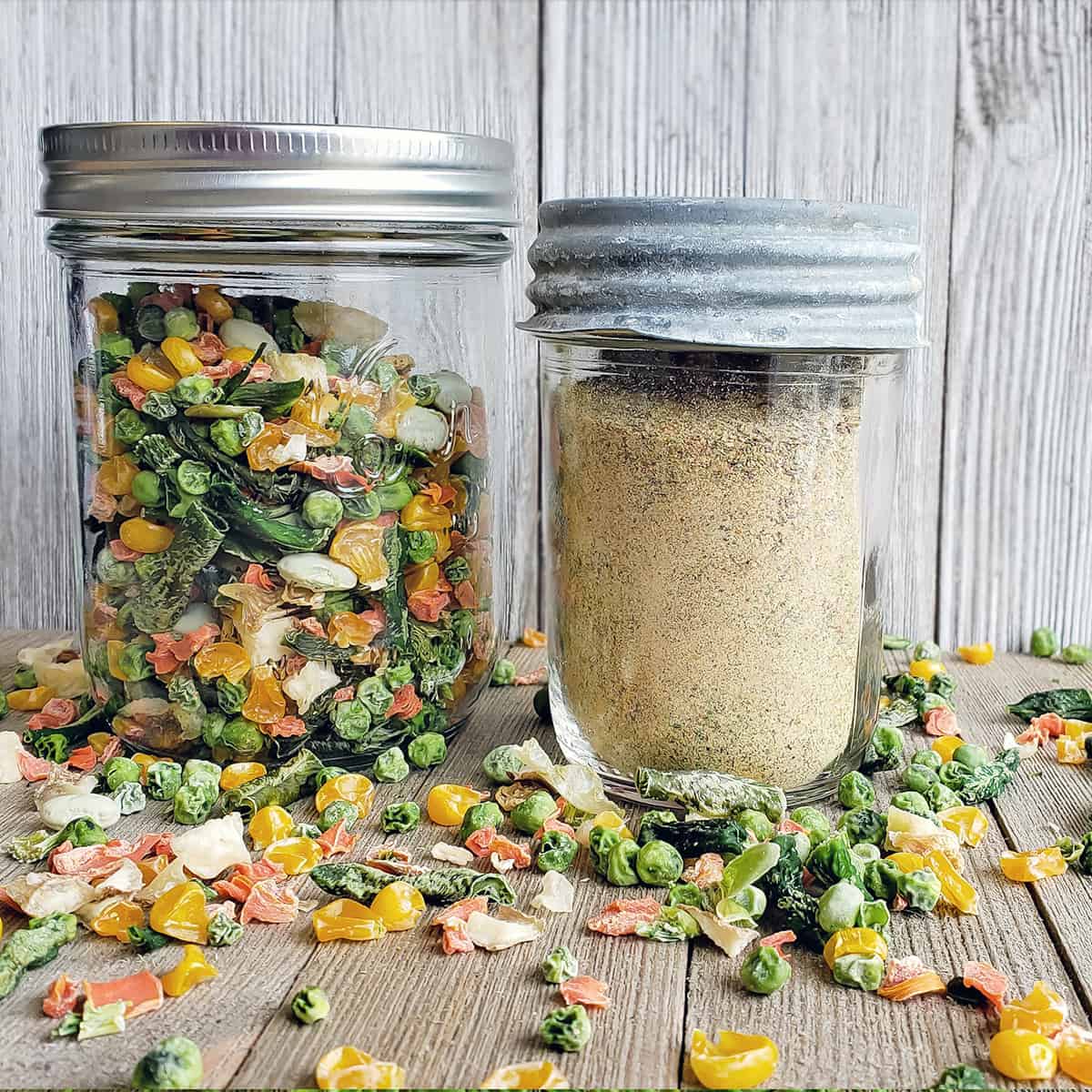
Do you get so excited to dehydrate vegetables, then let them sit on a shelf, unsure of how to use them. Or maybe you realize that you don’t even like them. Maybe you’ve got lots of small portions that just don’t make sense keeping.
This tip will make ALL of your dehydrated vegetables so versatile to use, and you’ll NEVER notice them! This works for dehydrated fresh vegetables, canned vegetables, and frozen vegetables.
According to the CDC, only 1 in 10 adults gets enough vegetables into their diets on a daily basis. The federal recommendation is at least 2-3 cups of vegetables per day, yet only 1 in 9 adults get that.
Seven of the top 10 leading causes of death in the United States are from chronic diseases. Eating a diet rich in fruits and vegetables daily can help reduce the risk of many leading causes of illness and death, including heart disease, type 2 diabetes, some cancers, and obesity.
https://www.cdc.gov/media/releases/2017/p1116-fruit-vegetable-consumption.html
But what if you just really hate vegetables? Or you have texture issues that make eating vegetables hard for you? There are a lot of reasons, besides having trained our mouths to only like junk food. But here’s how you can help boost the nutritional value of even your most nutrition-less meals.
What is Veggie Powder?
Vegetable powder is ground, dehydrated (dried) vegetables. Any vegetable. And the cool thing is you can mix them all up!
You can use
- Fresh Vegetables (this list is being updated as quickly as I can take pics!)
- Frozen Vegetables
- Canned Vegetables
- Freeze-dried vegetables (if you’re trying to use up a bag or can before you open a new one)
- Vegetables from making stock
How to Make Vegetable Powder
Of course, go ahead and dehydrate your vegetables. Whatever you’re using will be just fine. In my photo, it’s a combination of corn, carrots, green beans, peas, potatoes, broccoli, and cauliflower. They were part of my last frozen veggie dehydrator run. I happen to use an Excalibur Dehydrator, but any dehydrator will do.
You can do single ingredient powders or just mix up all of the veggies and powder them. The mixture tends to take on a more neutral taste. If your ratio is heavy on a particular vegetable, it may begin to take on more of that particular flavor.
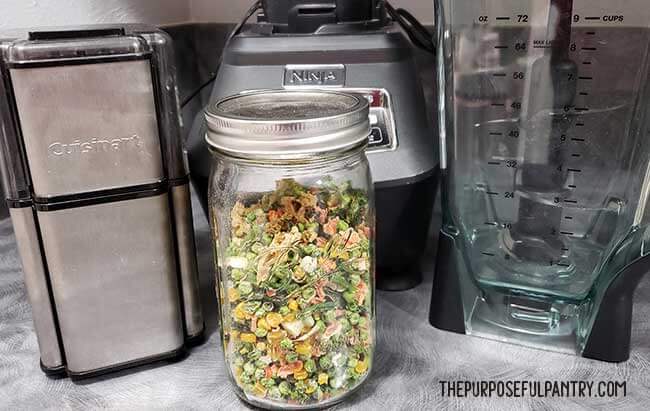
1. Pour Dehydrated Vegetables into a Blender
Whatever veggies you’re using – you’ll want to go ahead and grind them.
2. Powder
I pulse a few times, then set it to a sustained mode (I happen to use crush from my machine). This is to break up the pieces then run on a sustained cycle to pulverize the pieces.
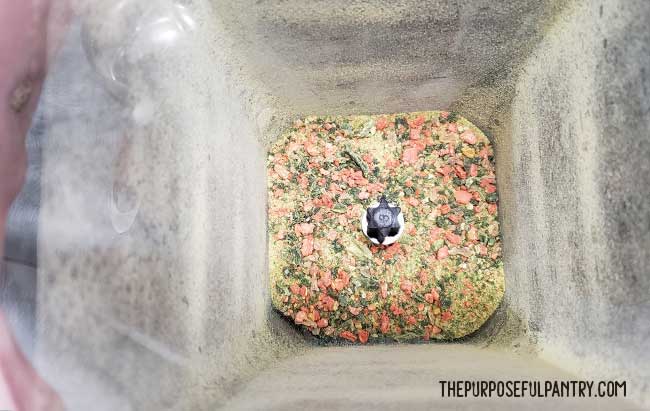
Here is the result of 1 C of the dehydrated vegetables ground in my Ninja blender. You can see that there are a few larger bits on top from green beans and carrots.
You can, of course, use any blender that you have, depending on how much you are doing at one time. Something like a Vitamix or a bullet blender will do this pretty quickly and you won’t have to grind again.
3. Strain and Grind Again
Strain out the powder into a bowl so I can take the larger bits and either use my blender again — or —
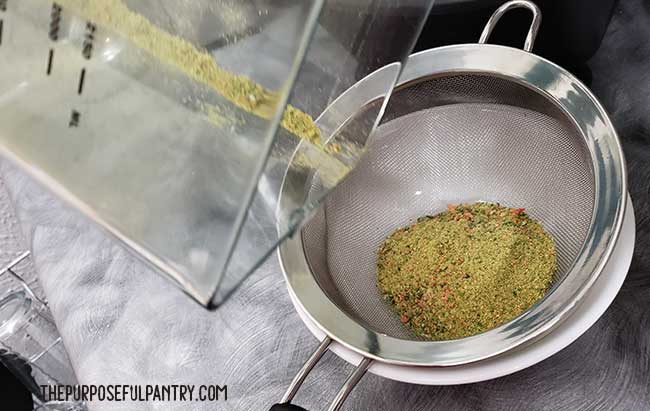
I throw them into my coffee grinder. (NOTE, I no longer use this model because the dust kickup became a problem have since switched to the Kitchen Aid coffee grinder. Removable bowls are still a favorite feature because cleanup is a breeze.
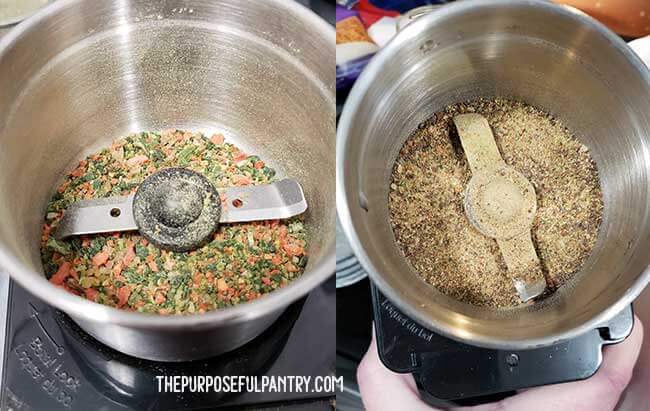
But you can see how the larger bits of carrots and green beans are ground into a fine powder. Sometimes the big blenders can’t get those last bits because there’s just not enough bulk to keep them in the blades. That’s when a coffee grinder can really come in handy.
Conversion Chart
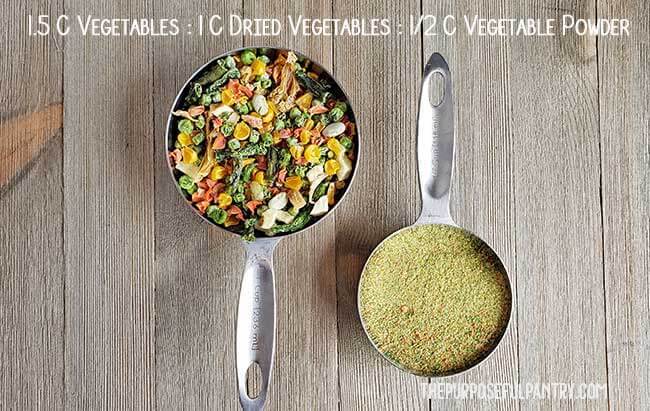
The basic ratio of vegetables to vegetable powder is this
1.5-2 C of vegetables to 1 C dehydrated vegetables to 1/2 C vegetable powder.
Your ratio will vary depending on the cut of your vegetables (these were small cut sizes). 1 C of uncut broccoli will be different than 1 C of small, chopped broccoli. This is an instance where the ratios don’t have to be exact. It is to give you a sense of the conversion that you can adjust to your own taste preferences.
►Add veggie powder to boost the nutrition of anything that you are making. While 1 TB of ground dried vegetables seems pointless in one instance, the accumulation of the addition of the powders to your daily life adds that much more nutrition throughout your day.
How to Store Vegetable Powder
Store in an airtight container. A mason jar, a mylar storage bag, but not zip-top plastic bags as they do allow air to permeate over time. You want to make sure that no air/moisture gets into your powder to allow it to clump or degenerate. Store in a cool, dry, dark place.
Ideas for using Veggie Powder
- 1 TB to baked goods – you really don’t taste it, but it helps make those brownies or cookies a little more ‘nutritious’!
- 2-3 TB to casseroles – no matter what veggies you may have added, it helps boost the nutrition level of tater tot casserole.
- 1.5 TB into scrambled eggs
- Smoothies
- 1-2 TB into bread
- Sprinkle on salads
- 1/4 C of vegetable powder to 2 C of broth makes a great vegetable broth
- Make your own vegetable capsules
- Create your own seasoning blends with herbs and spices
- Use powders to naturally color pasta
- Mix with stock and milk to make a cream of vegetable soup
Remember, these ratios are suggestions only. You may find you need to adjust them for your taste buds or for a particular dish.
An airtight container is all that is needed. You can use a moisture absorber to help with clumping if you are in and out of the jar and notice it.
Generally, powders are freshest 6-9 months. If you can open a jar and readily identify it by smell, it’s still good. If you have a hard time identifying it or you’ve noticed it is losing its color, it’s time to use it quickly and make more.
No – but it supplements what you are already eating! We use dehydrated vegetable powder more as a supplement to boost the vitamin and mineral content in our food, but not as a replacement for vegetables. You are getting a boost of vitamins and minerals.
However, if you do a straight 1/4C of vegetable powder to approximately 2 C of broth (bone or vegetable), you can count that as a serving of vegetables!
Here are some Single-Ingredient Vegetable Powders you can make
- Bell Pepper Powder aka mock ‘Paprika’
- Celery Powder
- Cucumber Powder (for DIY Ranch Dressing and Tzatziki)
- Green Onion Powder
- Pumpkin Powder
READ MORE: How to Make & Use Fruit Powders
YOUR INPUT ►► If you are already using vegetable powders, how do you integrate them into your meals?
Other Kinds of Dehydrated Powders You Can Make or Use
- Fruit Powders
- Green Powder
- Peanut Butter Powder

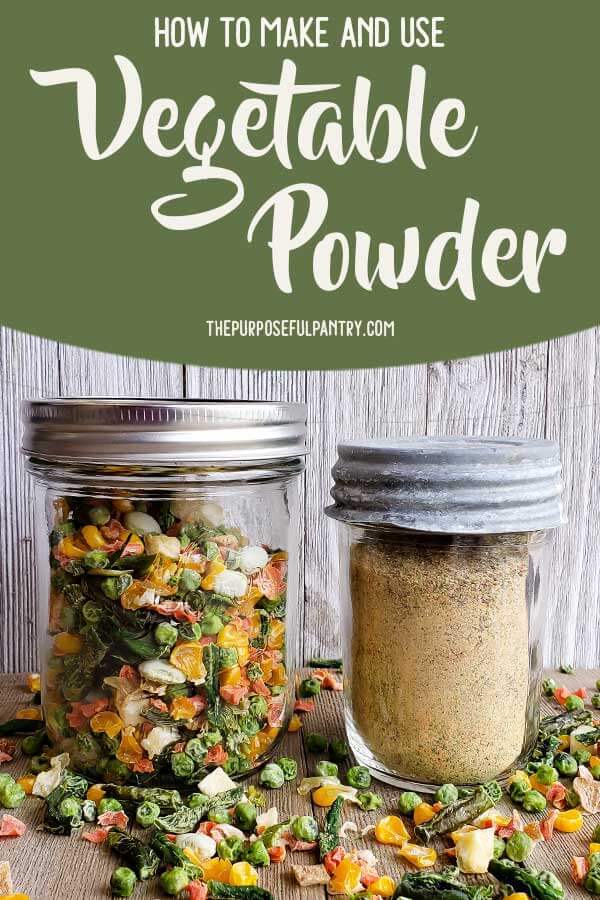

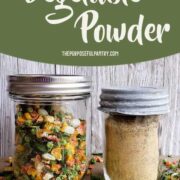

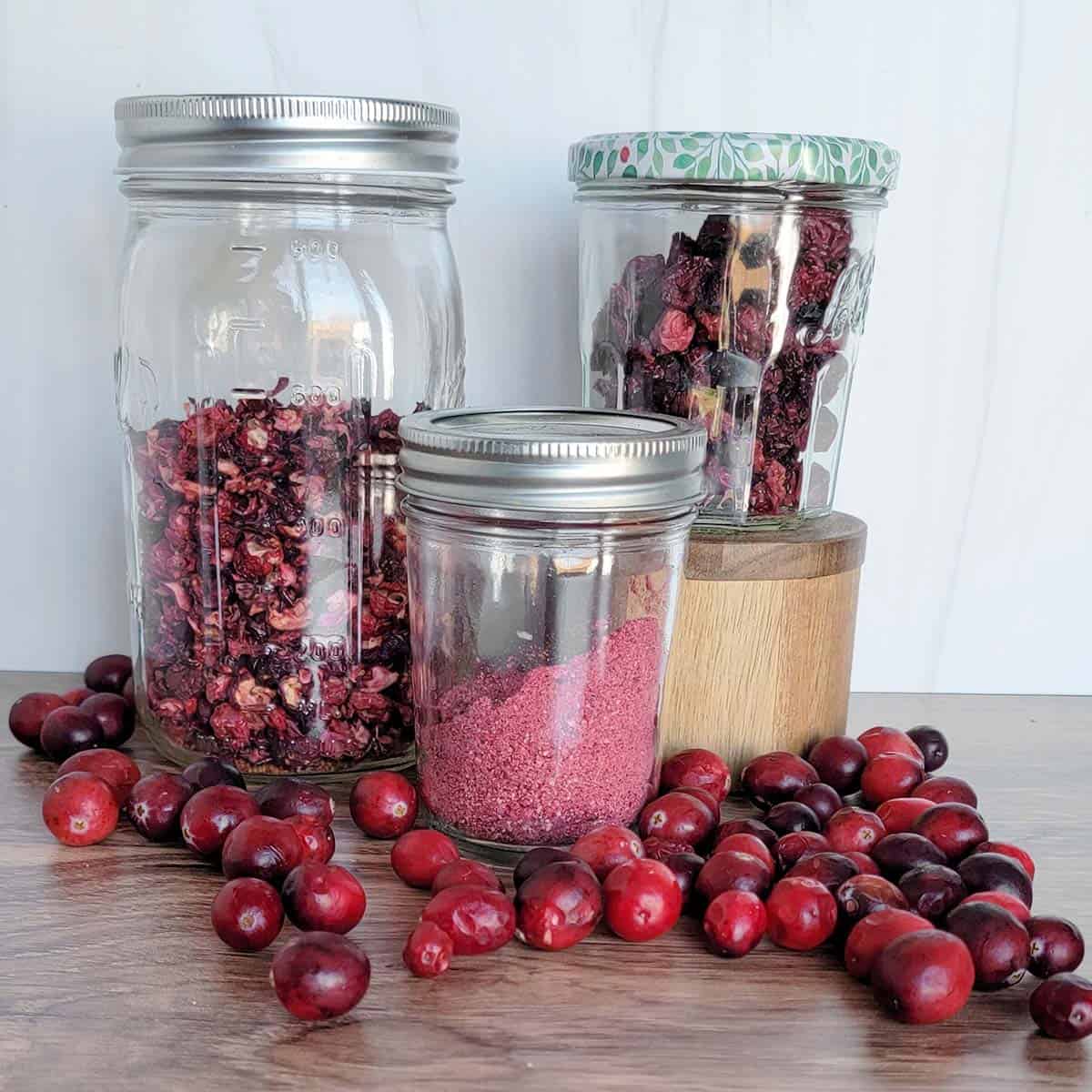
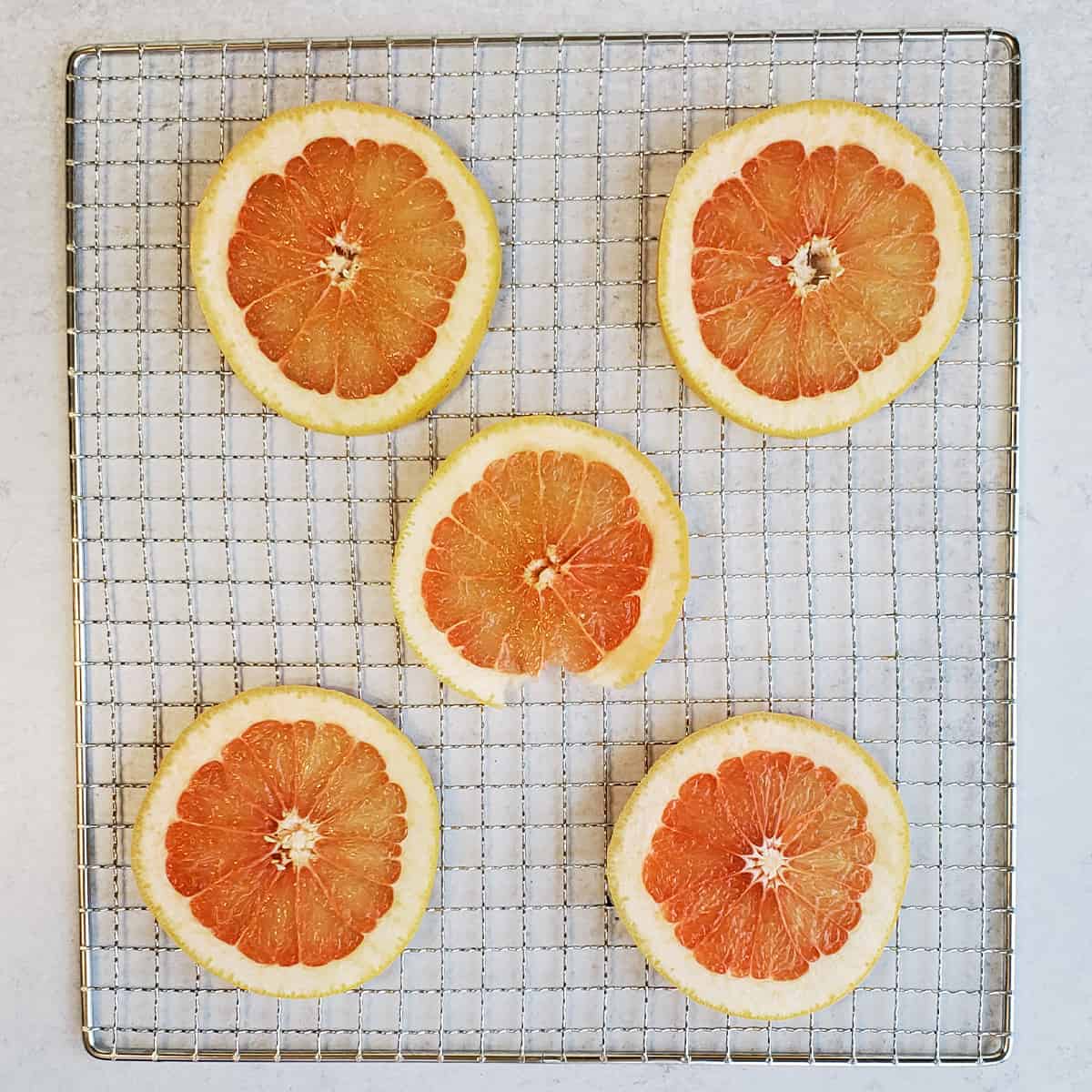
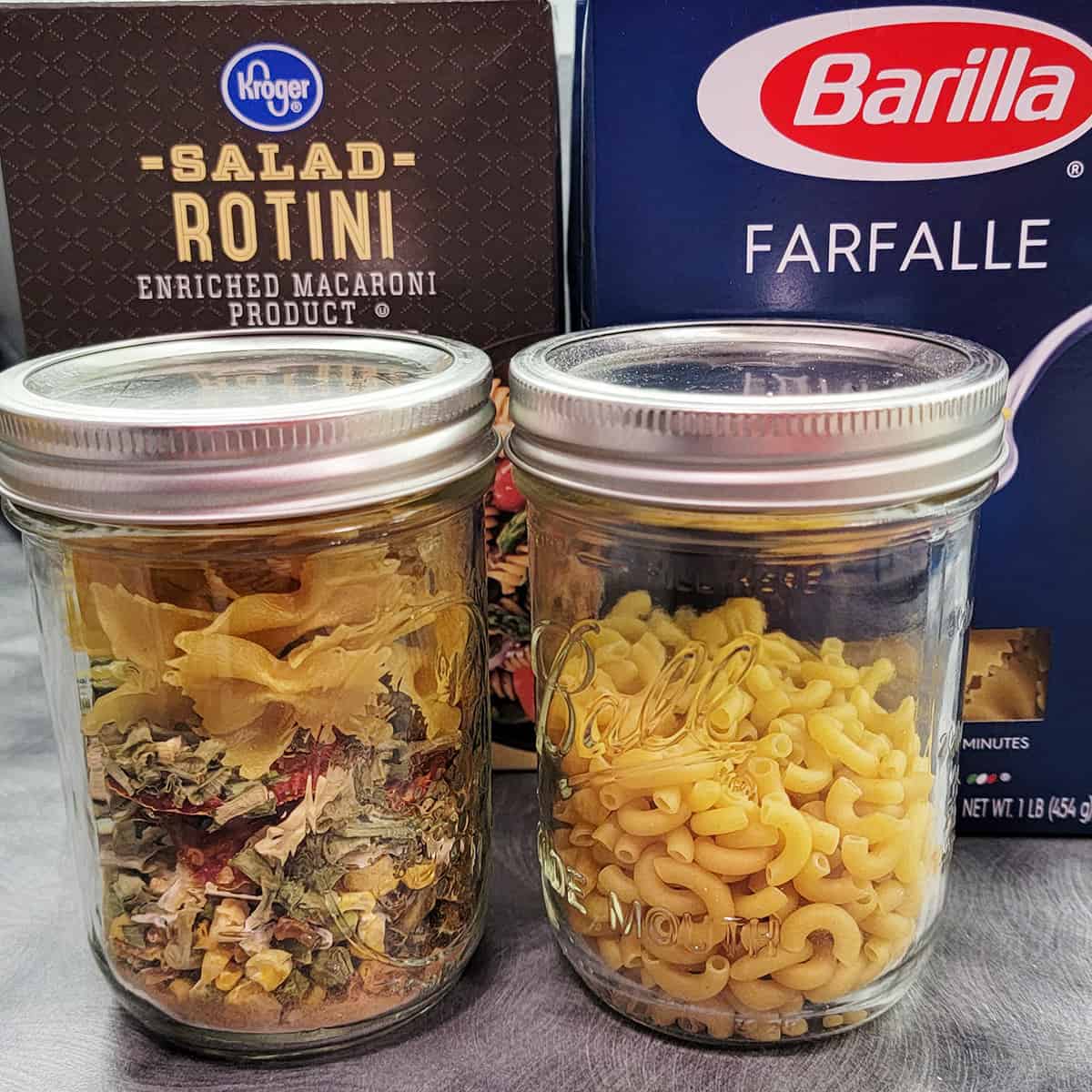
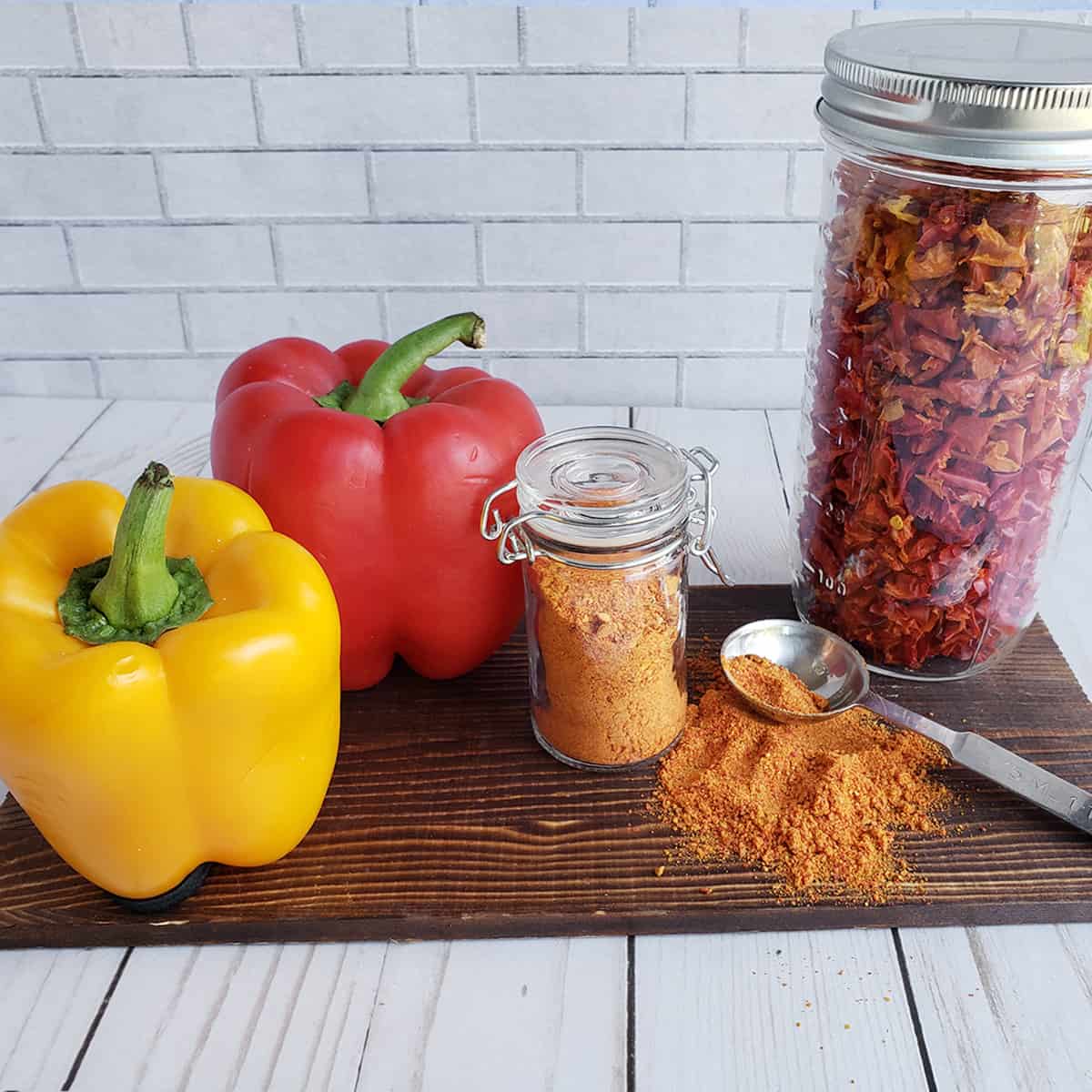
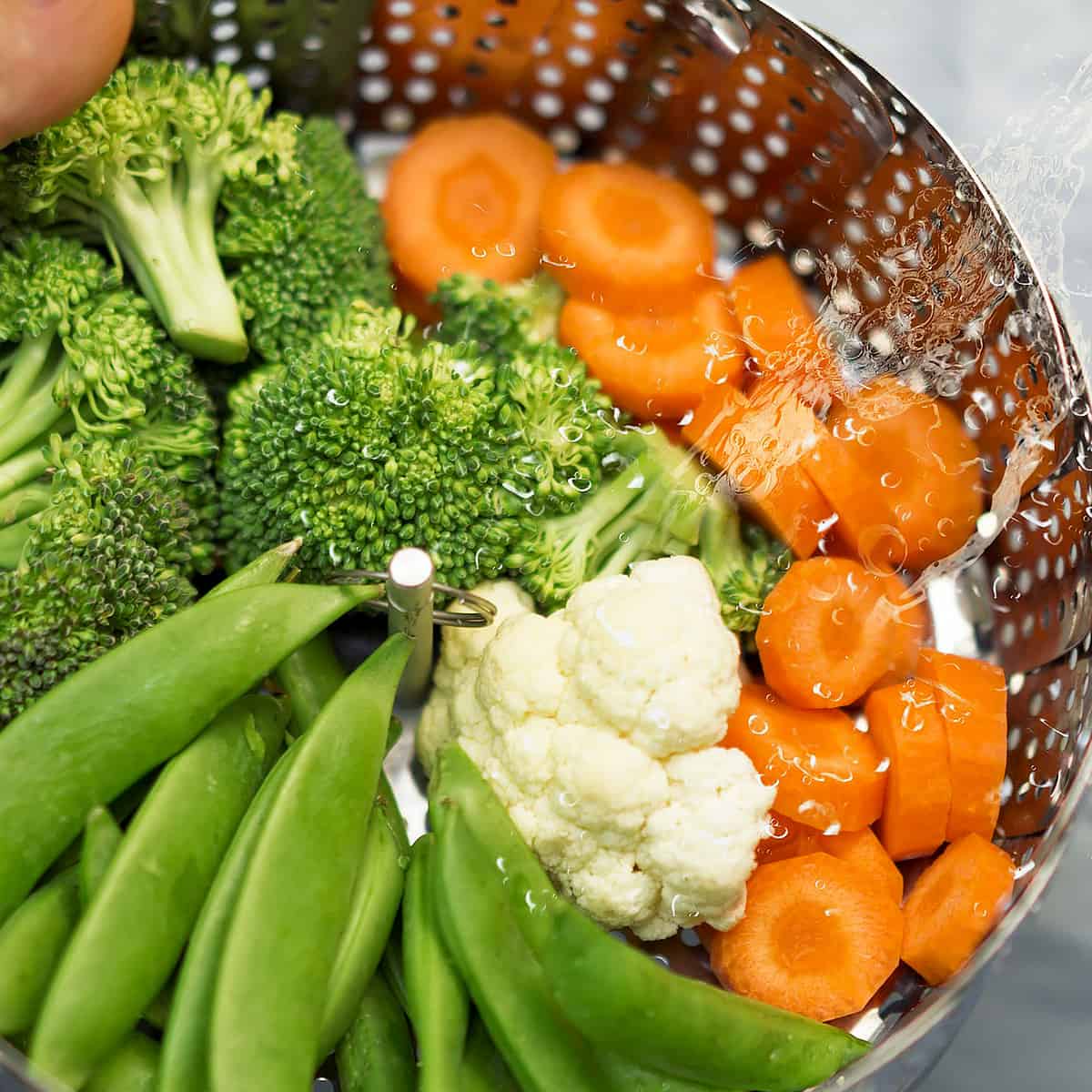
Wow! A whole new world of how to use our veggies. I grow quite a bit of veggies and grinding them into powders will surely add to my cooking but BEST of all can teach my children and grandchildren.
Would I be able to dehydrate the pulp left over from juicing vegetables to use for veggie powder? Since it’s basically just the fiber left, I’m wondering if it would be beneficial.
Sure is! It’s not just fiber, there are still nutrients in the pulp, just not as much as if it were whole.
Love this! Wish I’d done it when the kids were little. Can you pressure can these powders so they last longer?
No – pressure canning is not something you do with dehdyrated foods. If you mean vacuums sealing – it depends on the powder (not sugary ones). It’s better to keep it to store for long-term vs powdering for long-term.
Hello and thank you for the wonder money saving tip espeially with the prices of foods today. Do you have a reciepe for an instanat soup individually packed that I can put in our lunches daily? I want to make smaller portions and not have to open jar daily.
Thank you
You can take any of the recipes found here and convert them to smaller sizes or just repackage into smaller sizes once mixed: https://www.thepurposefulpantry.com/best-meals-in-a-jar-recipes/
I’m looking for a recipe for making a V-8 drink powder with tomato, onion, paprika, celery, carrot, etc. so I can mix up the powders, and spoon a tablespoon full into a glass and add water and have a glass of V8 vegetable drink
The only way to achieve that is to dehydrate V8 juice and then use that powder as a mix. If you mix dried, powdered vegetables, they do not dissolve because you are left with fiber, not juice. You can still do it to infuse the water, or run it in a blender to help make it blend better, or allow it to soak some to try to integrate more. Freeze-dried will work better as an instant mix. Here is a version of the mix you can try: https://www.youtube.com/watch?v=1DxviApID9Y
I make a daily smoothie for my wife and me. She has MS and vegetables are a big part of the Terry Wahls regimen. I cannot find any credible information on how much we are getting in the vegetable powder. Is a tablespoon of kale equal to a cup of chopped kale at the grocery?
I use powdered vegetables at a TB level of the following. Kale, Broccoli, Cocoa, cabbage, mixed Super Greens, beet, Coconut Cream Powder. I add 1/2 lemon, seed, pith as well. The liquid is 5oz of cranberry/pomegranate, 6oz of whey protein. I add a scoop of hydrolized beef broth, a cup of yogurt, and a hard boiled egg.
I can’t give you specific information on medical terms because I’m not a doctor, nor a nutritionist. But the best way to measure for yourself is to measure before and afters as you dehydrate.
Generally – 1 C of fresh = 1/3-1/4C dried = 1 Tablespoon powdered. This is affected by things like compression of large greens, how large you chopped things when you start, how much they shrink when dried. If you need to be specific, then measure before you dry, after you dry, and always keep that info onhand when you begin to make your smoothies.
I have been doing powder with dill pickles, onion, garlic scapes and I add them sour cream/yogurt to make dips. Love the info on this site.
Glad it’s been helpful!
1-2 tablespoons in bread. Does this work in a bread maker?
I’m sure it would – there’s nothing drastic about it to make a bread maker not work.